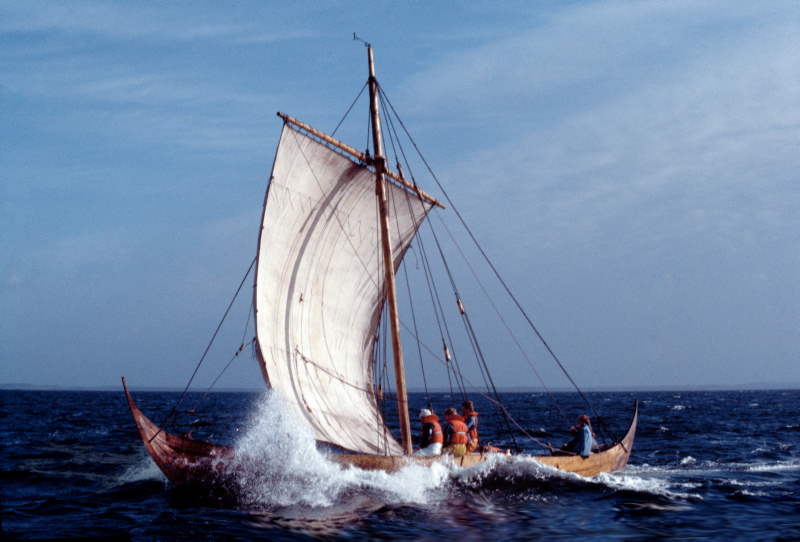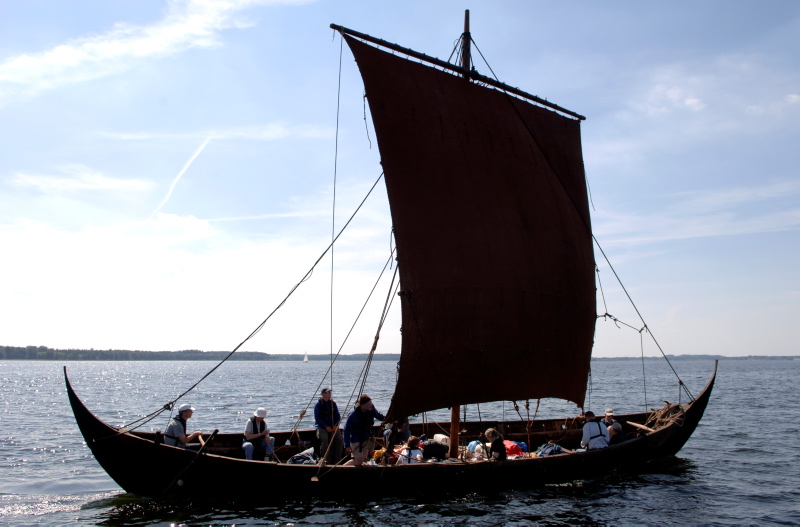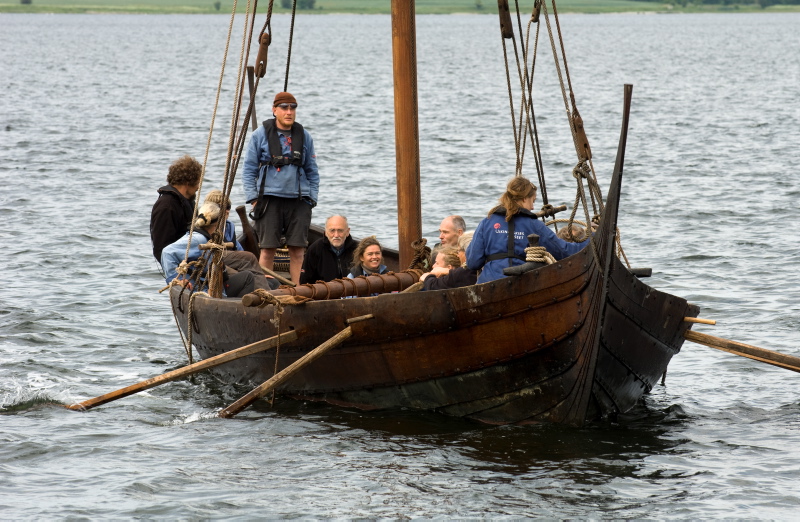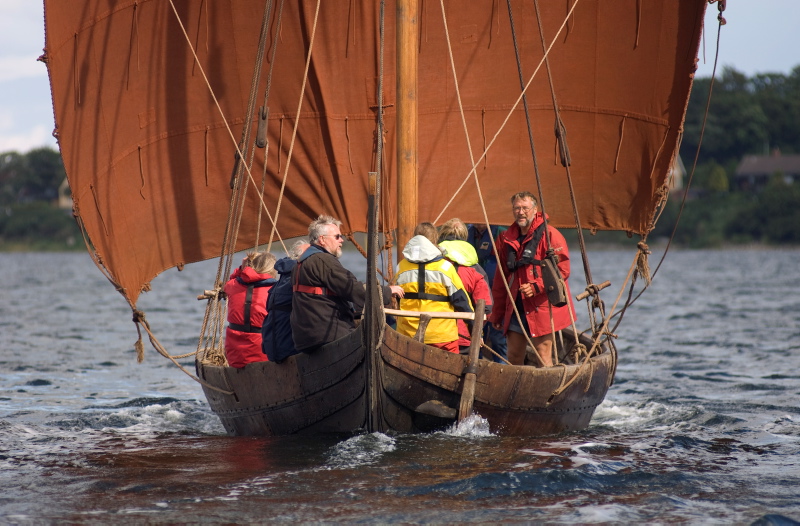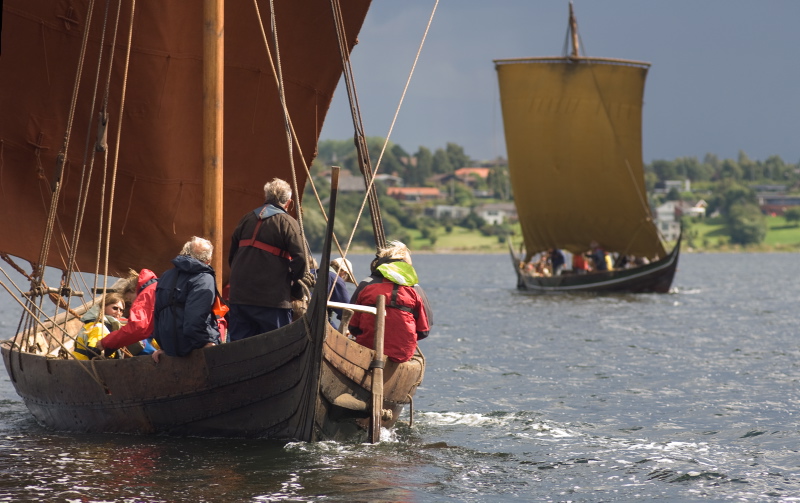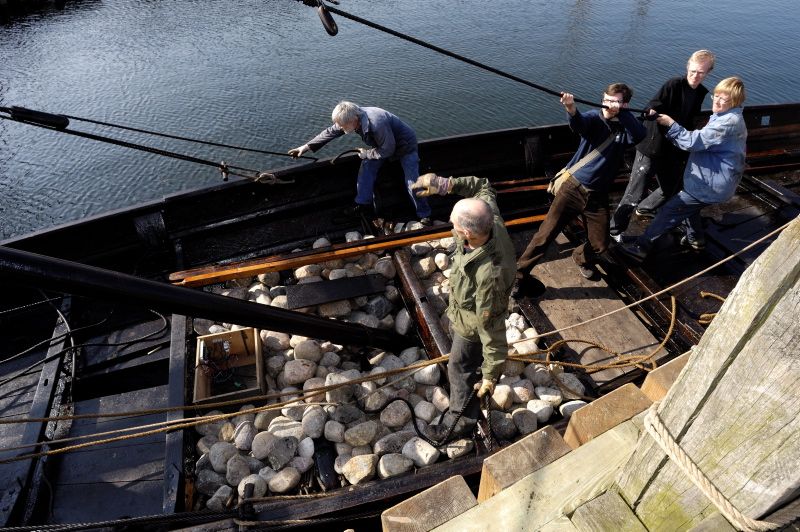Roar Ege
Reconstruction of Skuldelev 3, a trader from the Viking Age, ca 1030
Roar Ege was built of oak at the museum boatyard in 1982-84 as a reconstruction of the small trader found at Skuldelev (Skuldelev 3). The original ship was used for commerce and freight carrying in Danish coastal waters and the southern part of the Baltic. This vessel is very strong and at the same time very light with outstandingly beautiful lines, in that all wood that imparts weight to the ship but not strength is hewn away.
The original ship was the best preserved vessel among those found at Skuldelev. Around 75% of the hull remained and made highly accurate reconstruction possible. This is the reason that Skuldelev 3 was also the first vessel the Viking Ship Museum reconstructed.
The hull of Roar Ege was built using the technology of the Vikings, i.e. completely without the use of saws of any kind. Research into the traces left by tools in the original wood confirmed that the most important tool for cleaving tree trunks, and hewing planks and all other ship's parts, was the axe.
The raw material for the ship was sturdy oak logs of around a metre in diameter. These were cloven and hewn to the shape required while they were still fresh and moist (not stored/seasoned). Planks so produced are soft and pliable; they can easily be twisted into position without boiling or steaming. The planks were caulked using tarred, three-stranded wool thread the same as that found between the planks of the original ship.
The surface of the wood was treated with amixture of wood tar and linseed oil that gives the beautiful dark brown colour. However, some depictions indicate that the ships of the Vikings, especially their warships, could have had sides and sail painted in strong colours.
Building the reconstruction consumed about 20,000 working hours, but it has to be remembered that everything was made by hand, like the 2000 iron clinch nails fastening the planking together. The ropework and the hand-woven woollen sail alone accounted for 5000 working hours.
The ship's main source of power is the woollen square sail.
Currently the boat is in storage.
Information about Roar Ege
Dockyard: The Viking Ship Museum
Boatbuilder: Søren Vadstrup, Henrik Juel, Tom Nicolajsen, Helle Romme, Poul Nygård, Vibeke Bischoff, Anette Bischoff, Annette Rønnow, Lis Christensen, Søren Fisker, Ivan C. Hansen, Jens Rørly, Jan Bill, Morten Axelsen, Søren Nielsen
Owner: The Viking Ship Museum
Year of construction: 1984
Length: 14.00 meter (46 feet)
Width: 3.33 meter (11 feet)
Depth/draft: 0.75 meter (2 feet)
Weight: 2.10 tons
Total sail area: 45 m2
Displacement: 6.5 tons
Cargo-carrying capacity: 3-4,5 tons
Number of oars: 6
Crew: 5-8 men
Measured maximum speed, sail: 810 knots
Measured maximum speed, oars: 2,5 knots
Average speed over longer distance: approx 4 knots
